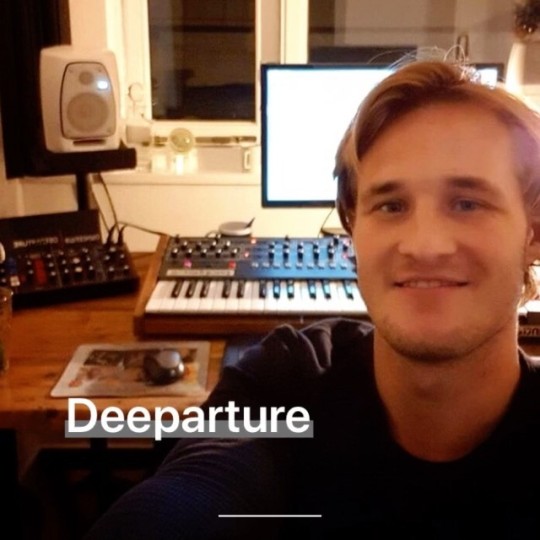#Deeparture
Explore tagged Tumblr posts
Text
Toolroom Radio EP748 - Presented by ESSEL
Digital Crate Digging Continues as we proceed and continue with this HumpDay Extravaganza, our constituents know what the deal will be! The saga / struggle continues! you might catch us out there floating in a turbulent sea of fantasies. Some of them elaborate; bad episodes intrude so we’ll have to deal with this and that; who’ll work with me? I tried to ban these and those; peeped game knew…
#AlfredBeck#Deeparture#discosoul#ElaborateFantasy#housemusic#HumpDayExtravaganza#MarkKnight#ODogDayParty#poetry#RETNA#RiccardoPaggi#SebbJunior#TheDeepshakerz#TheTruthGame
0 notes
Text
The Post-Human Animal
What’s behind the proliferation of animals in recent artworks?

In the late 1940s, the Russian-born French philosopher Alexandre Kojève visited the USA. For Kojève – arguably the most influential interpreter of Hegel in the 20th century, and one of the architects of the European Economic Community, a precursor to the EU – ‘history’ was predicated on political struggle. Like Hegel and Marx before him, Kojève believed that humanity would ultimately reach a consensus about its means of governance. This consensus (likely a mixed economy, or social democracy) would spell out the end-point of social evolution, what Hegel had called the ‘end of history’. This trip to the US, however, led Kojève to feel that any prospective future had already transpired. Upon observing the ‘eternal present’ of American society, Kojève claimed that ‘man’ had already disappeared, giving way to a creature that, though looking exactly like him, shared nothing of the human. The human, he argued, is predicated on a historical process, whereas this new being was one devoid of historicity and, therefore, humanity. For Kojève, this ‘post-historical Man’ had returned to an animal state, albeit retaining his civilized mores. Post-historical Man builds his edifices and works of art as ‘birds build their nests and spiders spin their webs’ and performs ‘musical concerts after the fashion of frogs and cicadas.’1

In 1959, Kojève took another trip, this time to Japan, where he underwent ‘a radical change of opinion’ on the subject of post-historical Man. He experienced how a society could live in a state of post-historical governance while retaining something of the human. Whilst the American lives in harmony with its inner animal, Japanese culture had given rise to mores that were fully formalized, where mannerisms and conventions override ‘content’ and are totally opposed to the ‘natural’ or the ‘animal’. The highly codified values of Japanese culture (for Kojève, a form of ‘snobbery’), the perfect expressions of which could be seen in Noh theatre or the traditions of tea ceremonies and Ikebana flower arrangement, had existed for centuries yet seemed strikingly postmodern. Japan was also the location for Pierre Huyghe’s most recent video, Human Mask (2014). The film’s exterior shots, showing a deserted and derelict town, were captured inside the Fukushima exclusion zone by a camera affixed to a drone. Indoors, the camera focuses on a strange creature wearing a Noh mask whose demeanor and gestures are uncannily human. Seemingly absorbed in self-contemplation, it runs its clawed fingers though a lock of long dark hair and softly touches the plastic wrap around a flower bouquet. In an evolutionary timeline, humanity usually stands between the animal and the android. In this light Huyghe’s creature, half ape, half cyborg, might be seen as the perfect embodiment of the warped temporality Kojève ascribed to the ‘post-historical’ condition.

Animals, we are told, have no history. In Joseph Beuys’ How to Explain Pictures to a Dead Hare (1965) and I Like America and America Likes Me (1974), in which the artist shared a room with a coyote for eight hours a day, the animal appears as a heteronomous Other. Whereas humans never cease to reconfigure their societies and their identities within them, a coyote, it seems, is always a coyote. The animal is in this sense a limit, the outermost edge of the human, a figure problematized by Jacques Derrida’s The Animal that Therefore I am (2008) and Giorgio Agamben’s The Open (2004). But ‘human’ and ‘animal’ are flexible concepts, able to connote the social as well as the biological. In 2005 Mircea Cantor brought a wolf into a gallery, this time paired with a deer. Both wolf and deer seem ill at ease, and whereas Beuys managed to finally embrace his coyote, in Cantor’s Deeparture there is no climax: wolf and deer remain eager to avoid each other. In 2003 Anri Sala filmed an emaciated horse standing by the roadside (Time After Time), seeming to bear the symbolic brunt of the collapsing Albanian state. ‘Every animal is a female artist,’ was Rosemarie Trockel’s 1993 response to Beuys’ ‘every man is an artist.’ Together with Carsten Höller, in 1997 Trockel built Ein Haus fur Schweine und Menschen (A House for Pigs and People) for that year’s documenta X. But it wasn’t until dOCUMENTA(13) in 2012 that the animal fully emerged as a multivalent concept for artistic speculation, which – drawing on Donna Haraway’s writings – was made to thoroughly renegotiate the human. For his 2014 projects Companion Species and The Companion Species Manifesto (after a 2003 book of Haraway’s), exhibited at dépendance in Brussels and Deborah Schamoni, Munich, Henrik Olesen sketched out the continuity between animal microchipping and human biometric IDs illustrated by a series of photographic collages displaying inter-species affection. Julieta Aranda’s Tools for Infinite Monkeys (open machine) (2014) uses the monkey – with reference to the ‘Infinite Monkey Theorem’ in probability – as a metaphor for the twin blades of randomness and probability. At the end of May the Fotomuseum Winterthur will open Beastly curated by Duncan Forbes, Matthias Gabi, Daniela Janser, Mallika Leuzinger and Marco de Mutiis; a month prior, the Haus der Kulturen der Welt (HKW) in Berlin will feature Ape Culture, an exhibition curated by Anselm Franke and Hila Peleg (also heavily indebted to Haraway’s thinking) which will cast primates as the porous border between animal and human.

But the flurry of interest in the animal and the revival of Haraway’s ‘post-human’ runs deeper than micro-trends in exhibition making. It seems to be motivated by the imbrication of political, economic and ecological crises of recent years and the awareness that these have failed to effect tangible political change. As Fredric Jameson put it in 2003, it is ‘easier to imagine the end of humanity than the end of capitalism’.2 The moment when nature is completely sublated into culture, what Hegel theorized as humankind’s destiny, has re-emerged under a more ominous heading, the Anthropocene, a geological epoch denoting the period from 1945, the year of the first nuclear detonation, and roughly coinciding with Kojève’s ‘end of history.’ Though political disaffection seems widespread, the theories that have emerged in recent years – speculative realism, Accelerationism and the notion of a ‘Post-Internet’ condition – fail to have an adequate grasp on the new social forms and categories that have resulted. As the privileged site where the distinction between the social and the political is contended, the animal in general, and the primate, in particular, has taken over the territory where battles over gender, race, sexuality and human rights are fought. The creature in Human Mask is a long tailed macaque called Fuku-chan who works as a waiter in a Tokyo restaurant.3 Though Fuku-chan is Japanese, the ‘masked-monkey’ act traditionally stems from Indonesia, where it is known locally as Topeng Monyet. Bred in captivity or captured as infants, the monkeys undergo a gruelling training process. To strengthen their hind legs they are often hung by the neck with both hands tied up for weeks on end, until they finally acquire a human-like posture, learning to handle props and perform human chores.4 In the exhibition Ape Culture at the Haus der Kulturen der Welt, Berlin, Human Mask will be shown along with Anja Dornieden and Juan David González Monroy’s The Masked Monkeys (2013–14), a video-essay in which enslaved monkeys appear as an allegory for social hierarchies. What emerges out of Huyghe’s video, rather than a grim commentary on Kojève’s post-historical condition or on animal exploitation, is the performative dimension of the human: as much as ‘female’ and ‘woman’ do not necessarily overlap, ‘humanity’ can be seen as the effect of reiterated acting, which can be either coupled or decoupled from the concept of Homo sapiens.

In a somewhat unexpected pairing, Ape Culture also brings together Nagisa Oshima’s Max, Mon Amour (1986) with Primate (1974) by Frederick Wiseman, an unnerving documentary about animal research. In Oshima’s film, a bored upper-class housewife starts an affair with a chimpanzee named Max. The husband’s obsession with watching his wife have sex with Max mirrors the thorough descriptions of simian intercourse of the Yerkes laboratory scientists. But Max, who stands as a signifier for the bestial impulses hidden under the veneer of civility, is ultimately tamed and housebroken, whereas at the Yerkes labs the steely commitment to protocol trumps a moral dimension and potential empathy. In the ’70s scientific methodology began to approach Oshima’s satire. The chimpanzee Washoe (caught in 1966 at the age of ten months) was taught sign language by Beatrix and Allen Gardner. Washoe was followed by Nim (also known as Nim Chimpsy, a pun on Noam Chomsky, the linguist) who was raised by a human family, and subsequently by Koko the gorilla, who besides mastering human communication became known for keeping a kitten as a pet. The attempt to break the silence between species also extended to other animals, but all of these experiments, scientists and research assistants – invariably female and white – attempted to rehabilitate the wild animal into becoming human. Besides a hidden gender and racial dimension, interspecies communication was fraught with another bias: the human-animal relationship depending not on merit but rather on power. No matter how well the animals performed, they all ended up back in lab cages. In Beastly the human-animal encounter is shown to heal social rifts (as in the work of Marcus Coates); it is shown to have an erotic dimension or unbridled affection, as in Carolee Schneemann’s Infinity Kisses (1986), a photographic series with the artist and her cat Vesper. It can, alternately, take the form of antagonism or aggression, as in El Gringo (2003), a video in which Francis Alÿs taped himself being attacked by a pack of dogs or as display and spectacle, as in in Katja Novitskova’s animal cut-outs.

At times allegorical, at times raw matter, only seldom is the animal allowed to simply be an animal, like the cat in Fischli and Weiss’s Büsi (2001), Tue Greenfort’s sausage-eating fox (Daimlerstraße 38, 2001), or the dogs who sniff and snuffle through a church aisle in Bojan Šarcevic’s It Seems that an Animal Is in the World as Water in the Water (1999), inscrutable in their ‘dogness’. All examples from a pre-YouTube era, these works seem to anticipate viral videos such as ‘Russian fishermen feeding fox’ or ‘cat rides bus’ and the millions of other animal videos now online. It is easy to dismiss these clips as part of the increasing infantilization of everything or as symptom of our ostensibly ‘post-critical’ condition. But our desire to watch animal videos might itself be more than a symptom of regression. For Beuys, art was work, and the proletariat the only universal class. With most of us barred from all but a consumptive relation to civil society, watching animal videos might also be construed as a form of passive resistance. Whereas Kojève sought to oppose the ‘animal’ to the ‘construct’, in the diffuse world of Post-Fordian economies all these figures are up for grabs. If the question of political subjecthood can no longer be answered by recourse to ‘artist’ or ‘citizen’, whether we have all in fact become Kojève’s ‘Japanese’, ‘American’ or ‘post-human’ is hard to decide. Replacing an obsolete notion of the ‘human’, perhaps the animal has become the new face of humanity.
2 notes
·
View notes
Text
📹
#ArminvanBuuren
#AStateOfTrance Episode 1168 w/ #RubenDeRonde & #Deeparture
youtu.be/Vi0abT7b0ow
Ⓜ️
#ASOT1168
https://www.mixcloud.com/ArminvanBuuren/a-state-of-trance-episode-1168-armin-van-buuren/
📋
#ASOT Ep. 1168
trancepodcasts.com/a-state-of-trance-episode-1168
https://trancepodcasts.com/a-state-of-trance-episode-1168
📹
#ArmadaMusic
#DillonFrancis & #ShipWrek - Over The Edge (Official Visualizer)
youtu.be/u6XDXhpIELo
youtube
💽
Armin van Buuren - Breathe In
http://avb.lnk.to/BreatheIn
0 notes
Text
Night Club Musical Act 098
djbigdirty.com
1. [00:00] Intro
2. [00:37] Le Youth & EMME- Talking Like That {This Never Happened}
3. [04:19] Kaskade & Lauren L’aimant- Save Me {ARKADE}
4. [08:45] Madonna- Frozen (Arbey Gonzalez Bootleg) {White}
5. [13:49] Miss Monique & AVIRA feat LUNA- Subterranean {Armada}
6. [17:57] Marsh feat ALLKNIGHT- Everything {Major Recordings}
7. [22:22] Florence + The Machine- You’ve Got The Love (Mark Knight Remix) {Toolroom}
8. [28:06] Mau P- Drugs From Amsterdam {Island}
9. [31:43] CASSIMM- Love Desire {Golden}
10. [35:54] Chicane feat Moya Brennan (Ilan Bluestone Remix) {Armada}
11. [40:39] Deeparture & ALLKNIGHT- Catch Me If You Can {Odd One Out}
12. [44:59] BLOND:ISH, Madonna & Miss Monique feat Eran Hersh & Darmon (Miss Monique Remix) {Insominiac}
13. [48:50] Kasablanca- Rubicon {Anjunabeats}
14. [52:48] Bedouin- Tijuana (Vintage Culture Remix) {Human By Default}
15. [57:25] Eli & Fur- You’re So High (10 Years On) {NYX}
16. [01:02:10] Everything But The Girl- Missing (Sonny Noto Remix) {White}
17. [01:06:45] Estiva- On The Line (Club Mix) {Colorize}
18. [01:10:35] Tears For Fears, Tiesto, Niiko, SWAE, & Gudfella- Rule The World (Everybody) {Capitol}
19. [01:13:32] Faithless feat Zoë Johnston- Crazy English Summer (Maor Levi Remix) {White}
20. [01:18:09] Solardo & Mandalo- Lemon & Lime {SOLA}
21. [01:23:10] Ruffneck feat Yavahn- Be Somebody
22. [01:27:14] Anyma & Delhia de France- Walking With A Ghost {Interscope}
23. [01:31:25] TH;EN- Gente {Einmusika}
24. [01:36:23] Jason Ross feat Dia Frampton- Never Alone {Anjunabeats}
25. [01:41:08] Above & Beyond & Oceanlab- Satellite (Above & Beyond’s 2023 Progressive Mix) {Anjunabeats}
26. [01:46:55] KREAM & Coco Star- I Need A Miracle {Musical Freedom}
27. [01:49:51] Zsak- can You Feel It {There Was Jack}
28. [01:53:24] John Summit & Hayla- Where You Are (Mike Saint-Jules Bootleg} {White}
Check out this episode of dj bigdirty's night club musical
0 notes
Text










#Multinationale Friedenskampftruppen#Neocapitalist dictatorship masquerading as beacon of participatory governance w/ addiction to world- & peoples domination ideology & praxis#By all means build back better than bloodthirsty Biden by befriending
0 notes
Audio
Lastminute. 1 by Deeparture https://ift.tt/2YpSYZO
1 note
·
View note
Audio
Deeparture - Concorde [FSOE UV]
2 notes
·
View notes
Text
Brake
I feel like I’m falling But I’m sitting still And can’t find anything to say Wishing it would go away I feel like I’m calling But my body is still I can’t seem to find my way Out of this endless mazeI hope it won’t happen But still I’m afraid That I can’t seem to find my place In everything that comes my way I aim for indifference For some peace of mind But every time I try to let it go Something…
View On WordPress
0 notes
Audio
211 - The Boom Room - Deeparture by The Boom Room https://ift.tt/2MiX5io
1 note
·
View note
Text
Stephan Jolk - Analogy
Stephan Jolk – Analogy
youtube
View On WordPress
#deep#deep progressive#Deeparture#electronic#electronica#house#journey#melancholic#melodic progressive#melodic techno#progressive#progressive house#progressive journey#Spitfire#techno#trip#Youtube
0 notes
Audio
Hans Zimmer - Time (Deeparture Unofficial Remix) - FREE DOWNLOAD -
#Deep House#Progressive House#Hans Zimmer#Deeparture#Unofficial Remix#Melodic Techno#House#Deep#Progressive#Hans#Zimmer#Time#Remix#Unofficial#Bootleg#Remake#Inception#Melodic#Techno#Film#Movie#dopecheddar#music#electronic music#audio#song#track#electronic#soundcloud
2 notes
·
View notes
Photo

🎧Channelping.com✨We love to share your posts. Let’s spread the music! @deeparturenl DJProducer⭐️Deeparture📀Deep Down Show#34📀Dimmed📀Royal Dutch📀Disruption Protocol - Out Now❗️ @Beatport #channelping#music#dj#deeparture#techhouse#techno#housemusic#djremix#musiciproducer#hardstyle#trance#dancemusic#edm#deephouse#nightclub#electronicmusic#darktechno#radio#undergroundtechno#acidhouse#clubbing#acidmusic#psytrance#beatport#youtube#soundcloud#recordlabels#spotify https://www.instagram.com/p/B644W0ugqUD/?igshid=1lfd2c7ngltw8
#34📀dimmed📀royal#channelping#music#dj#deeparture#techhouse#techno#housemusic#djremix#musiciproducer#hardstyle#trance#dancemusic#edm#deephouse#nightclub#electronicmusic#darktechno#radio#undergroundtechno#acidhouse#clubbing#acidmusic#psytrance#beatport#youtube#soundcloud#recordlabels#spotify
0 notes
Video
youtube
1 note
·
View note
Audio
"Deep Down Show #19" by Deeparture
0 notes
Link
Featuring John Digweed & Nick Muir, Sky Civilian, Lusine, Deeparture (NL), Olaf Stuut, Secret Of Elements, Banco De Gaia, Woob, Max Cooper, The Grid, Burial, “and more!” [artwork by beeple]
#mixtape#john digweed#nick muir#sky civilian#lusine#deeparture (NL)#olaf stuut#secret of elements#banco de gaia#woob#max cooper#the grid#burial
1 note
·
View note